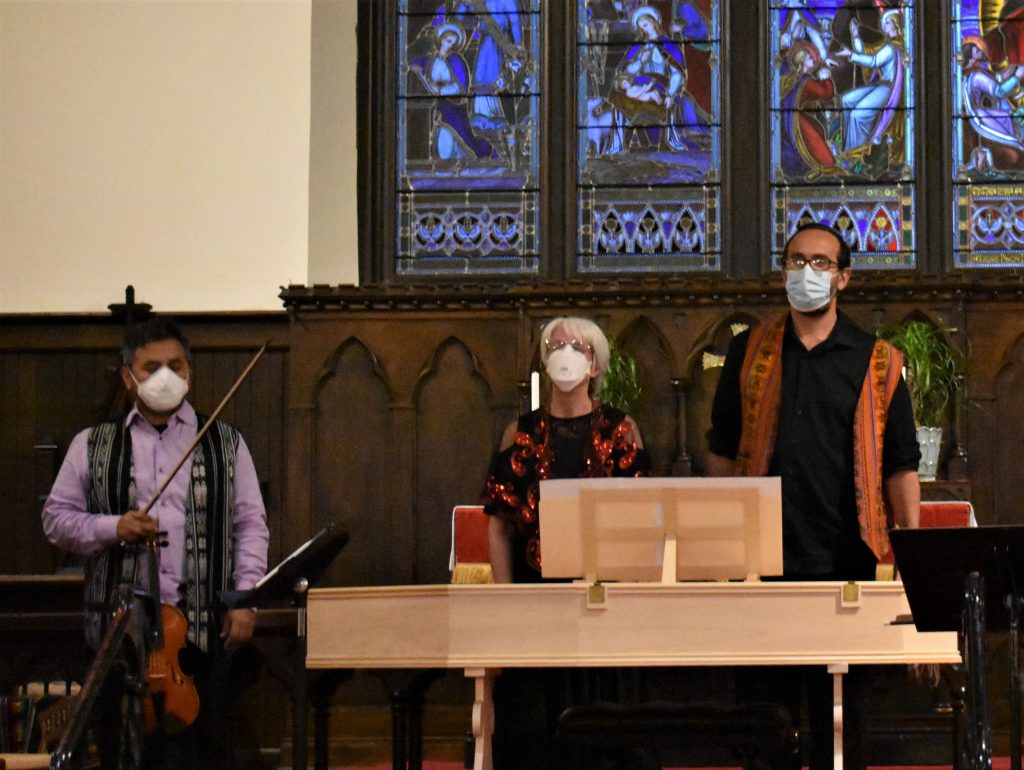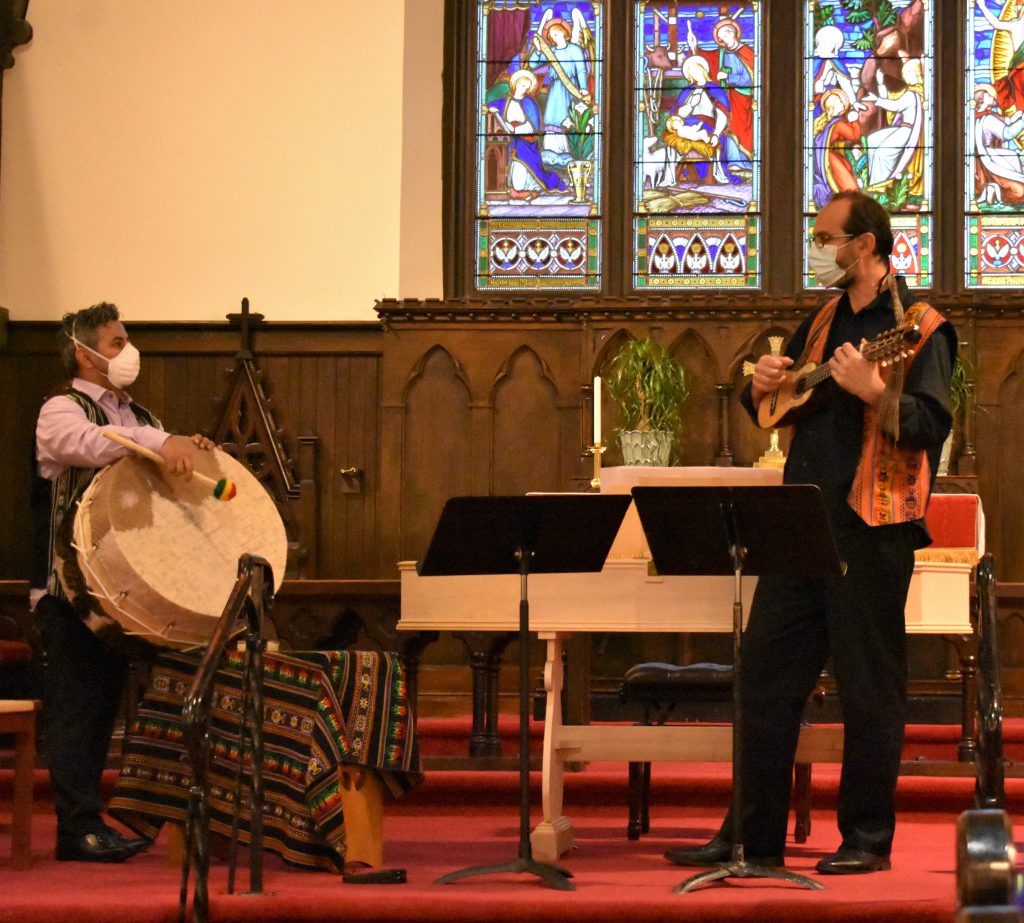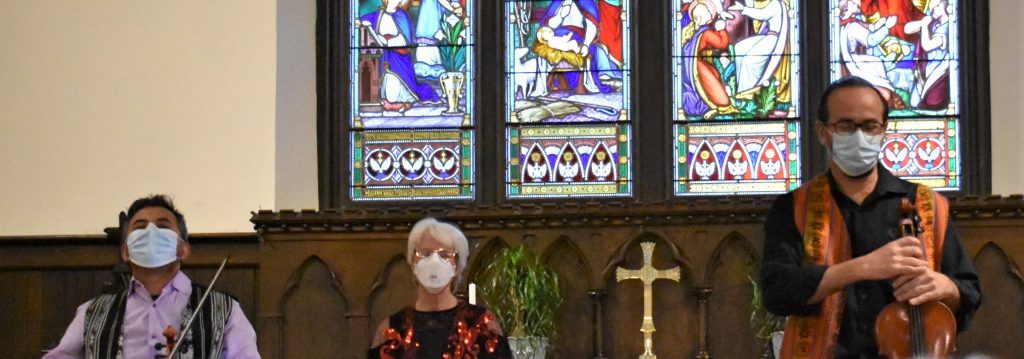
by Kevin T McEneaney
This past Friday evening Christine Gevert performed a program on the interplay of South American indigenous folk music as it melded with Spanish music during the Baroque period which appropriated various melodies and dance formats of folk music into classical music, especially J.S. Bach and Georg Phillip Telemann. Well-known Latin American pieces were performed alongside of two lesser-known, more lengthy classical works. This nexus had much to do with the popularity of dance tunes during the Baroque period.
This trio consisted of Christine Gevert, director of Crescendo, on virginal harpsichord, Carlos Boltes from Chile on charango and viola, and Job Salazar Fonesca, a member of Early Music America, on violin and drum.
The trio opened with four mariachi tunes arranged by Salazar and Gevert. (Mariachi, indigenous variations on polkas and waltzes, originated in 18th century as essentially tavern music.) Mariachi music is usually in 4/4 time and could be danced to, yet it usually addresses emotions of deep sorrow or great joy. My own limited experience with this music is spending some time quaffing beer in the famous Long Bar in Tijuana where everyone wears a knife or has a gun at ready in holster, and randomly hearing roaming buskers on streets in Ecuador. Instead of following Vivaldi’s famous recipe of fast/slow/fast, they more often follow slow/fast/slow in sentimental modality. They concluded with an eastern gigue (Celtic jig) tune from Veracruz (the neighborhood of Irish exile Liam Lamporrt from Wexford, whose Robin Hood train robberies became the fictional Zorro legend). (The Monaghan bank robbers in my own family actually robbed greater amounts of money, much of which went into the failed 1916 rebellion in Dublin.) This was effective upbeat performance with a hint of crescendo.

Telemann’s lengthy Concerto Polonais in four movements allowed Gevert’s virginal to shine with lyric backing of Fonesca’s violin whose timbre delivered more emotional depth than commonly found in Baroque renditions.
After Intermission, they opened with Perpetuo forever (2003), a modern duo composition by Dan Román (from Puerto Rico) in Salsa rhythm, whereby Boltes on charango delivered a most startling string performance as he competed with Fonesca on violin. This most unusual composition integrated minimalist technique with process structure whereby ostinato repetition competed with linear development. This was a robustly impressive piece that squared a circle.
Fonesca brought out a large drum for two Huaynos, indigenous music from Bolivia and Peru. Gevert then joined for three Cuecas in arrangements by Boltes and Gevert. These illustrated the melding of indigenous music with classical techniques yet were basically dance tunes popular in brothels. One was from Peru, another Argentina, the last a patriotic tune with slightly comic conclusion.
The climax was J.S. Bach’s Orchestral Suite No. 2 in B minor, BWV 1067 from Leipzig (1779). In this minimalist arrangement by Boltes and Gevert. Bach loved to put folk tunes through varied keys and odd permutations (his favorite for this kind of trick was usually the gigue), but here it was variati0ns on the Polonaise in double time, followed by mellow Menuet, and climatic Badinerie from France with joyous and rousing conclusion wherein all three instruments, virginal, violin, and viola sounded like a single instrument!
